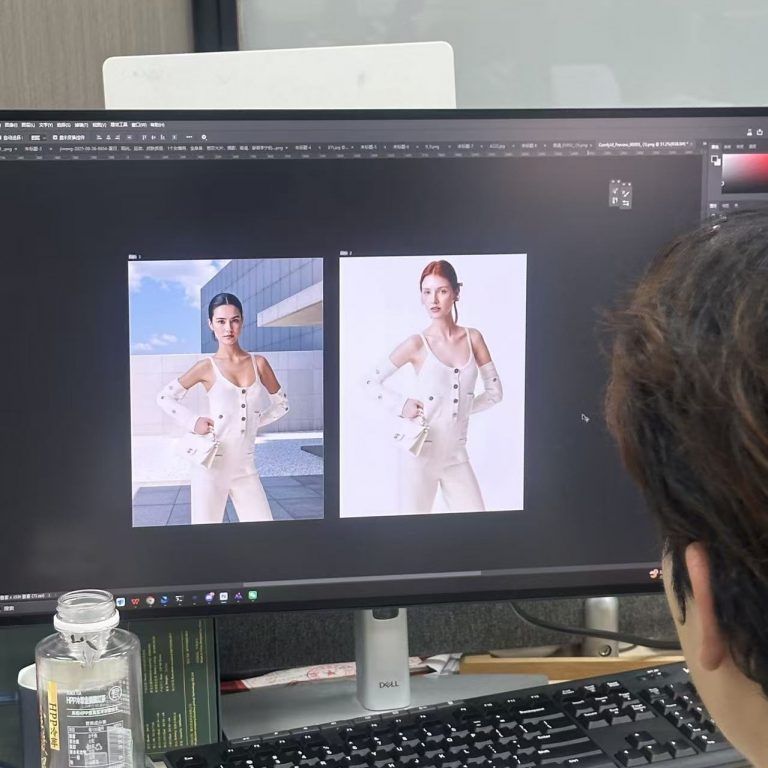I recently came across an article by Rindfleisch and O’Hern, who proposed a Co-creation model encompassing both user-contributed content and user-selected content. This framework emphasizes that consumers are not merely passive recipients but active collaborators in shaping brand visual experiences (Rindfleisch & O’Hern, 2015).
In the second intervention, I examined the boundaries that brands should not cross from an external perspective. In the third intervention, inspired by the work of Rindfleisch and O’Hern, I decided to take the opposite approach: exploring how consumers can shift from passive recipients to active participants.
In searching for relevant work, I found the COFI framework by Rezwana and Maher (2022), which highlights the importance of two-way human–AI interaction design. Their study compared co-creation systems with and without AI-to-human communication, finding that two-way dialogue significantly improved user experience. Participants perceived AI as a more reliable and personalised partner (Rezwana & Maher, 2022).
From these insights, the meaning of consumer participation becomes clearer: by embedding their ideas directly into AI image generation, consumers can transition from being passive viewers to active contributors. The key question then is: How does this shift affect their emotional connection to AI-generated brand visuals?
Intervention 3 | Participatory AI Visual Generation Experiment
Research Aim
Objective:
This experiment aims to test whether participatory co-creation can enhance consumers’ emotional resonance with brand visuals and their sense of “feeling understood.” It also seeks to observe shifts in emotional and cognitive attitudes before and after using AI tools for visual generation.
Observation Dimensions
This experiment focuses on the following three psychological stages to capture participants’ emotional acceptance pathways toward AI-generated brand imagery:
- Initial Impression – Participants are shown an AI-generated brand image from a real commercial context and asked to share their intuitive reactions and emotional resonance ratings.
- Co-Creation Participation – Participants are invited to use an AI tool (e.g., Runway or Midjourney) to generate a brand image based on their personal preferences (e.g., prompts, colors, moods).
- Post-Participation Reflection – After the co-creation process, participants are asked whether their perception of the brand has changed, whether they feel more “understood,” and how emotionally connected they feel to the final result.
Research Hypotheses (H)
- H1: If participants can input their own ideas (e.g., prompts, color palette, or scenes), they will develop a stronger emotional connection to the resulting AI-generated image.
- H2: The act of co-creation itself (seeing their ideas materialized) will increase their trust in both the brand and the AI tool.
Participants

- Recruit at least N ≥ 18 consumers, ensuring diversity across gender, age, and level of interest in fashion.
- A portion of participants may overlap with those from Intervention 2, enabling comparative analysis of attitude shifts.
- The sample design aims for generalizability and balanced representation.
Experiment Procedure
Operational guide:https://24042236.myblog.arts.ac.uk/files/2025/08/Participatory-Al-Visuals-Experiment62.docx

- Present participants with an AI-generated brand image from an actual commercial context. Record their initial responses in terms of realism, emotional warmth, and brand congruence.
- Provide access to an AI visual generation tool (or a guided prompt selection process). Encourage participants to create an ideal brand image based on their own aesthetic preferences.
- Show participants the final AI-generated image and collect second-round feedback, asking:
- Do you feel the brand understands you better now?
- What elements most influenced your trust and emotional attitude toward the brand?
- Did using the AI tool increase your affinity or distance toward the brand?
This experiment aims to explore whether participatory AI co-creation can be a valid mechanism for strengthening the emotional bond between consumers and brands, offering behavioral insights for future AI branding strategies.
Pre-test Results (Original Images)
- Emotional warmth: M = 4.48. Moderate, but 23% rated low (1–3), showing insufficient warmth.
- Emotional resonance: M = 4.22. Weak overall, with 28% reporting low resonance (1–3).
- Realism: M = 5.05. Highest among all dimensions, suggesting audiences perceive images as “visually real.”
- Brand fit: M = 4.91. Slightly above neutral, but 36% rated low (1–4), indicating brand consistency is not fully convincing.
Conclusion: Without participation, audiences primarily recognised “realism” but felt little emotional warmth or resonance. AI visuals were perceived as rationally real rather than emotionally engaging.
Post-test Results (After Participation)
- Emotional warmth: ↓ from 4.48 to 3.82.
- Emotional resonance: ↓ from 4.22 to 3.98.
- Realism: ↓ from 5.05 to 4.24 (largest drop).
- Brand fit: ↓ from 4.91 to 4.03 (significant decline).
- Preference: YES 46.3%, NO 53.7%. Majority still unconvinced.
- “Brand understands me”: 52.6% agreed, 35.8% neutral, 11.6% disagreed.
Conclusion: Participation reshaped consumer perception of the brand. While emotional warmth and realism decreased, over half agreed that the brand “understands me.” This indicates that co-creation holds potential but requires higher output quality to transform participation into genuine emotional resonance.
Final Reflection
Participation is not a silver bullet. While co-creation can foster a sense of being understood, it does not automatically translate into authentic emotional connection. To achieve both perceived understanding and emotional resonance, brands must optimise both the participatory mechanism and AI output quality.
References
- Rindfleisch, A. and O’Hern, M. (2015) ‘Customer co-creation: A typology and research agenda’, Review of Marketing Research, 12, pp. 275–296. Available at: https://experts.illinois.edu/en/publications/customer-co-creation-a-typology-and-research-agenda (Accessed: 27 August 2025).
- Rezwana, J. and Maher, M.L. (2022) ‘Identifying ethical issues in AI partners in human-AI co-creation’, arXiv preprint. Available at: https://arxiv.org/abs/2204.07644 (Accessed: 27 August 2025).

Leave a Reply